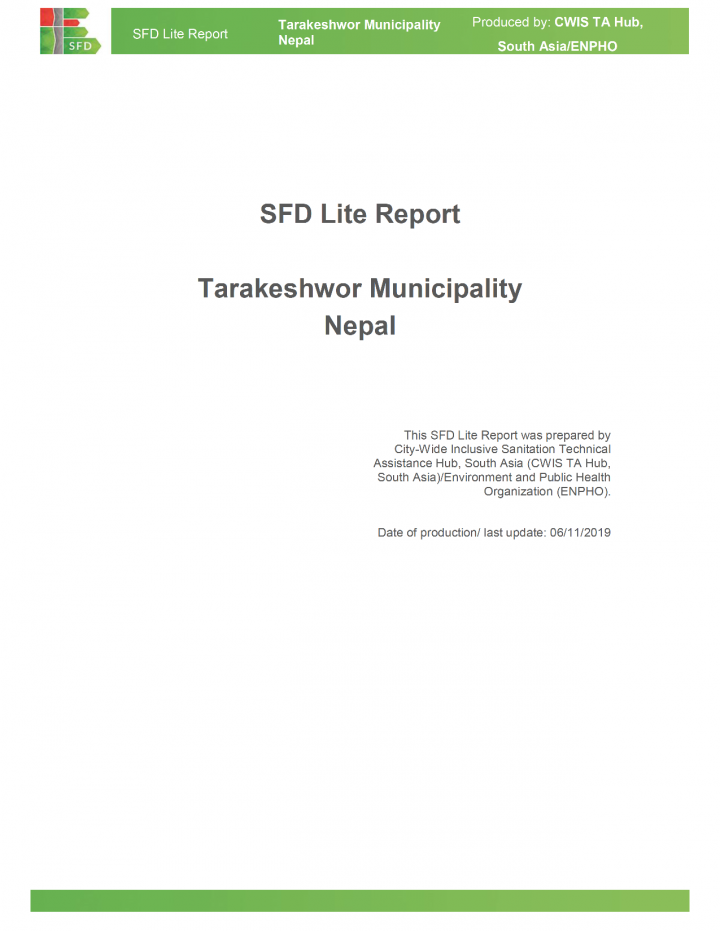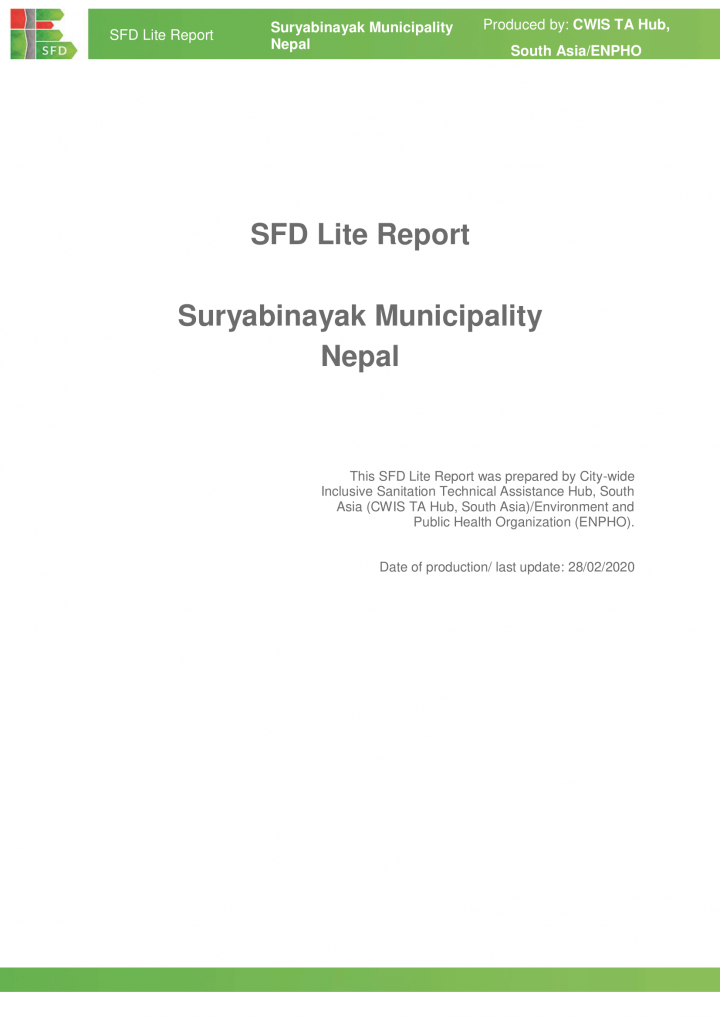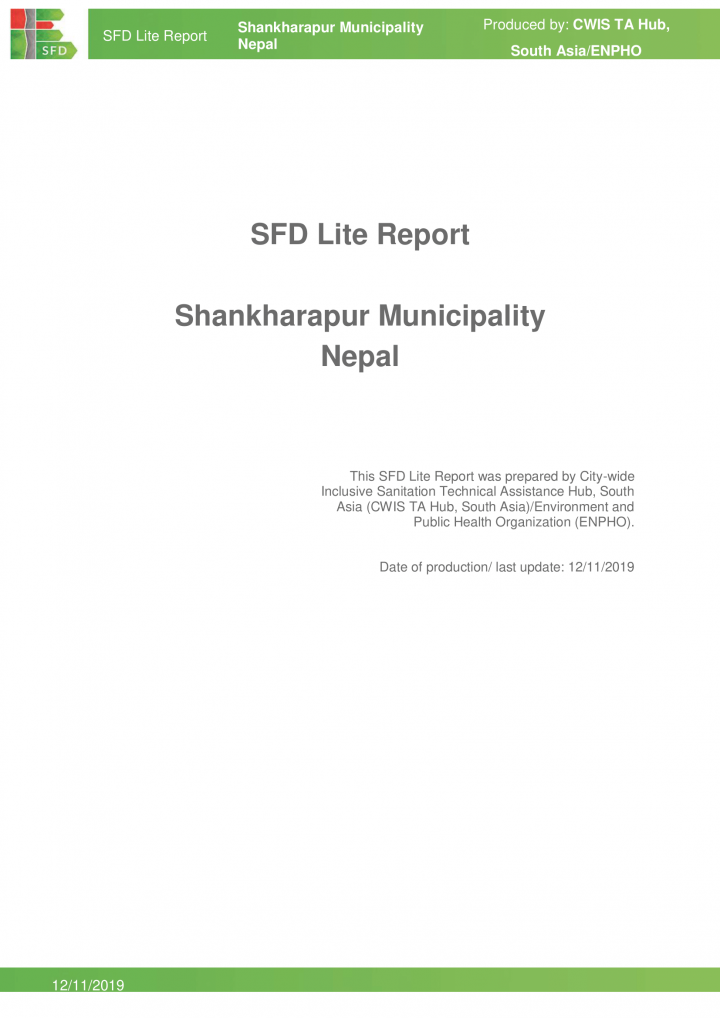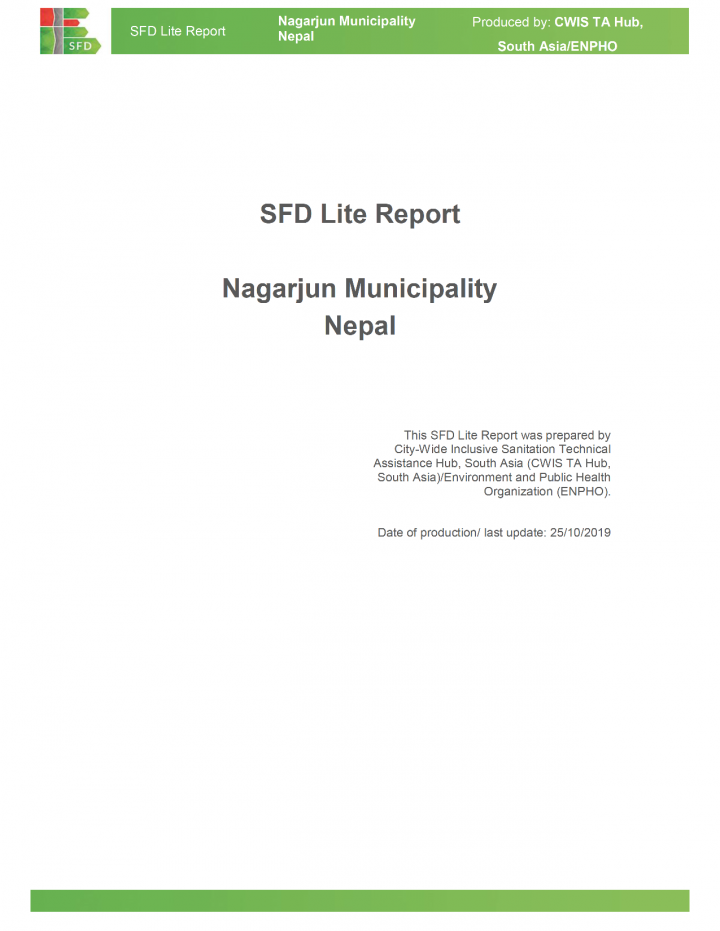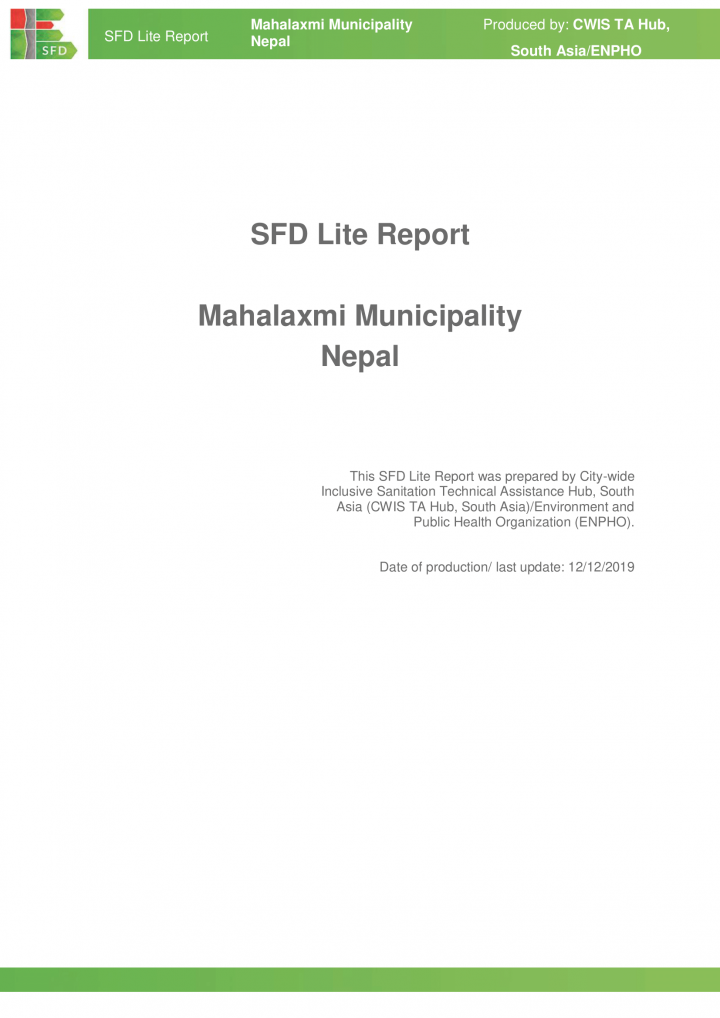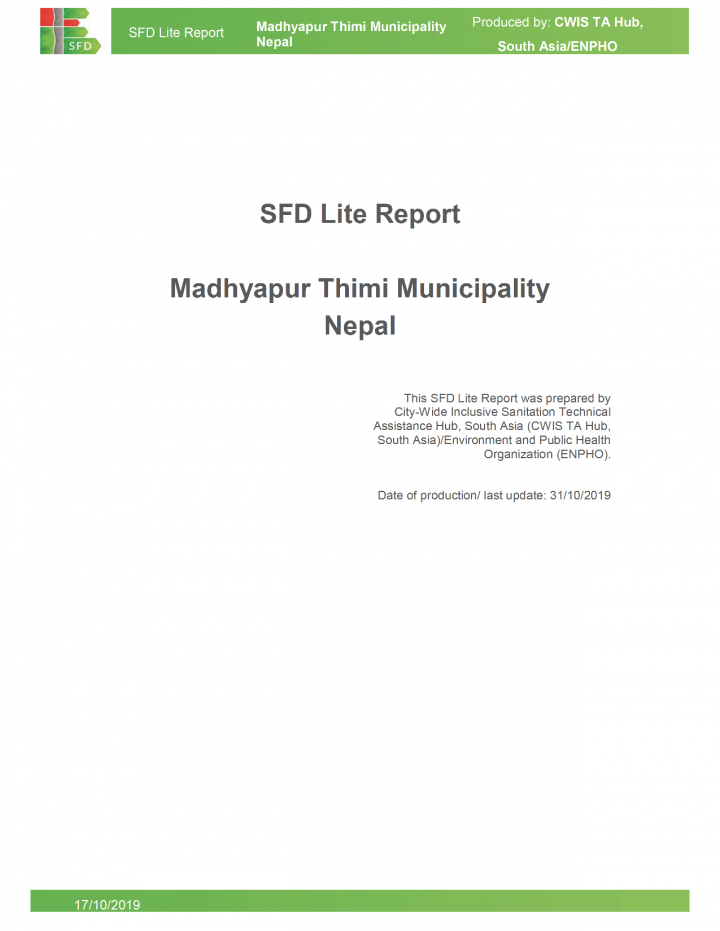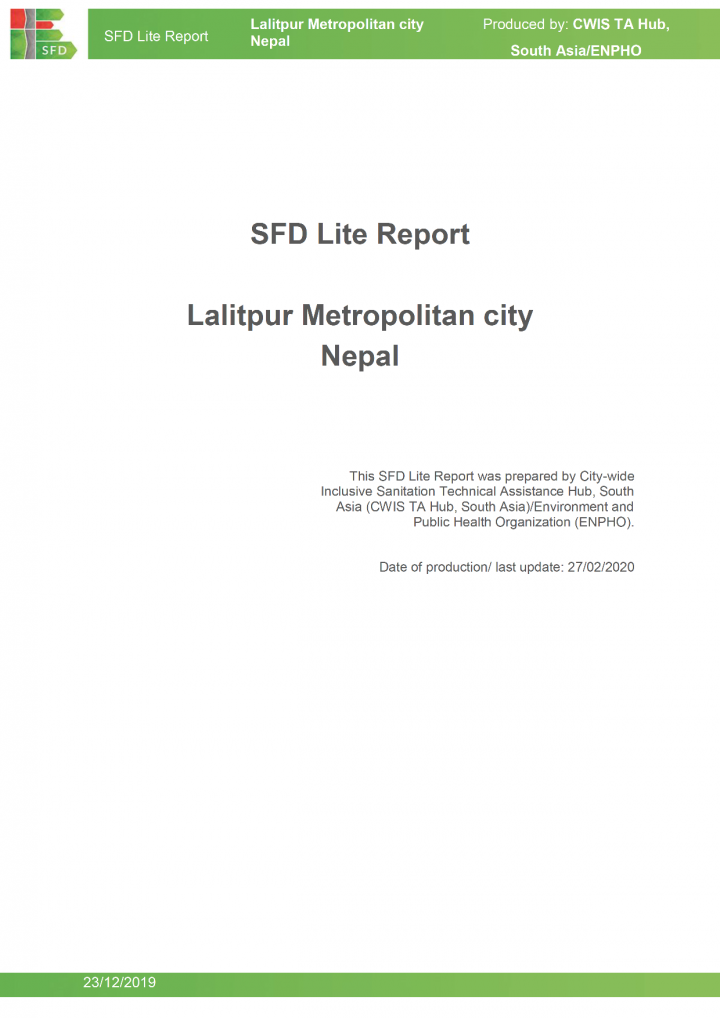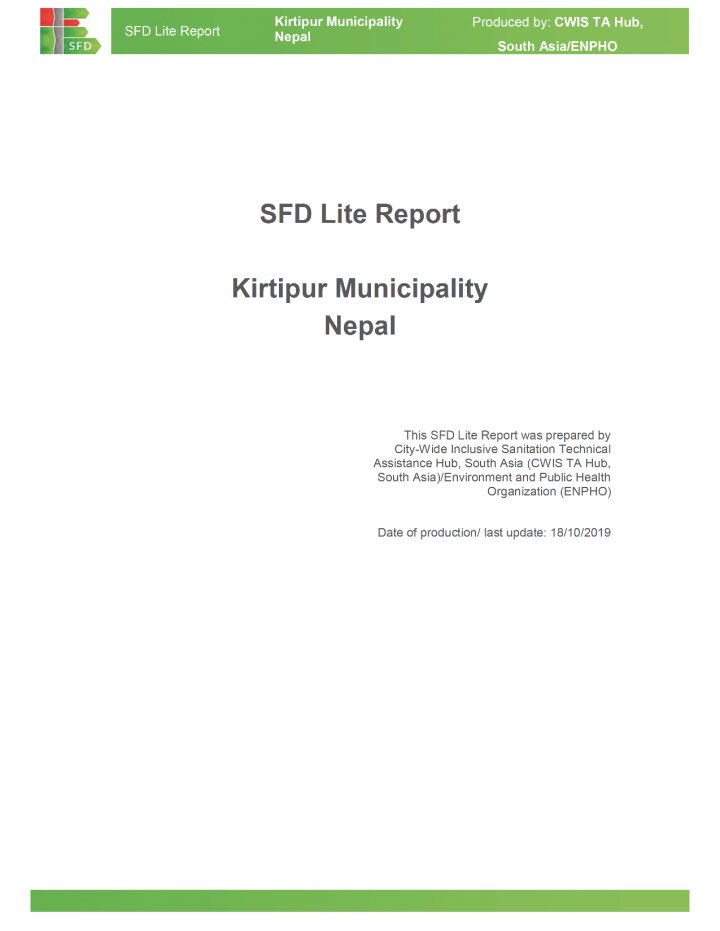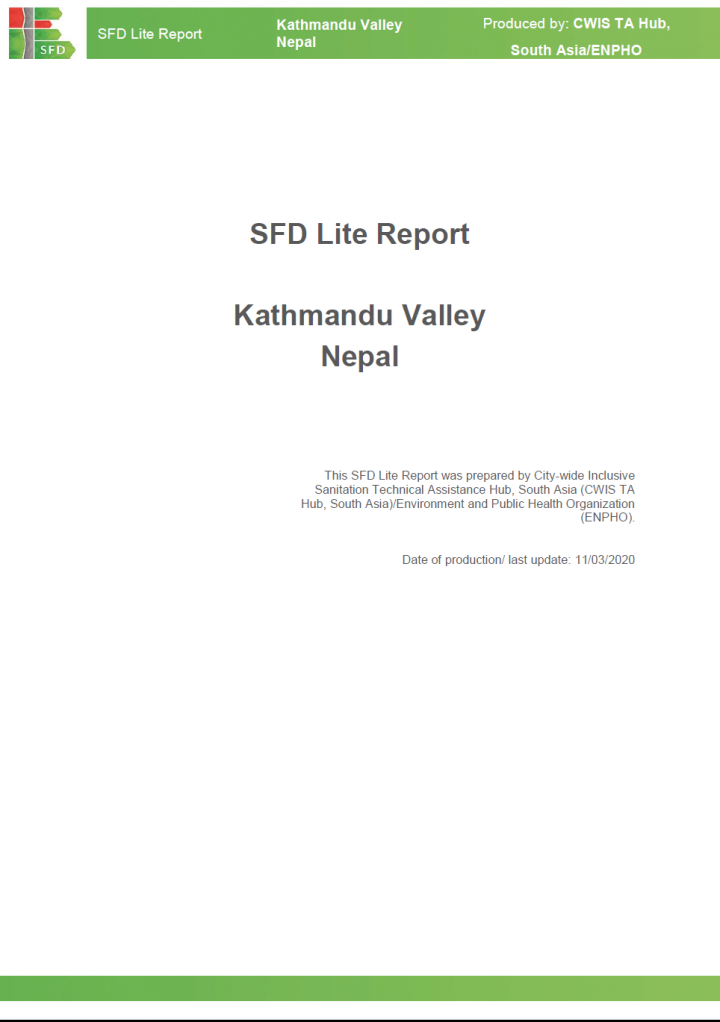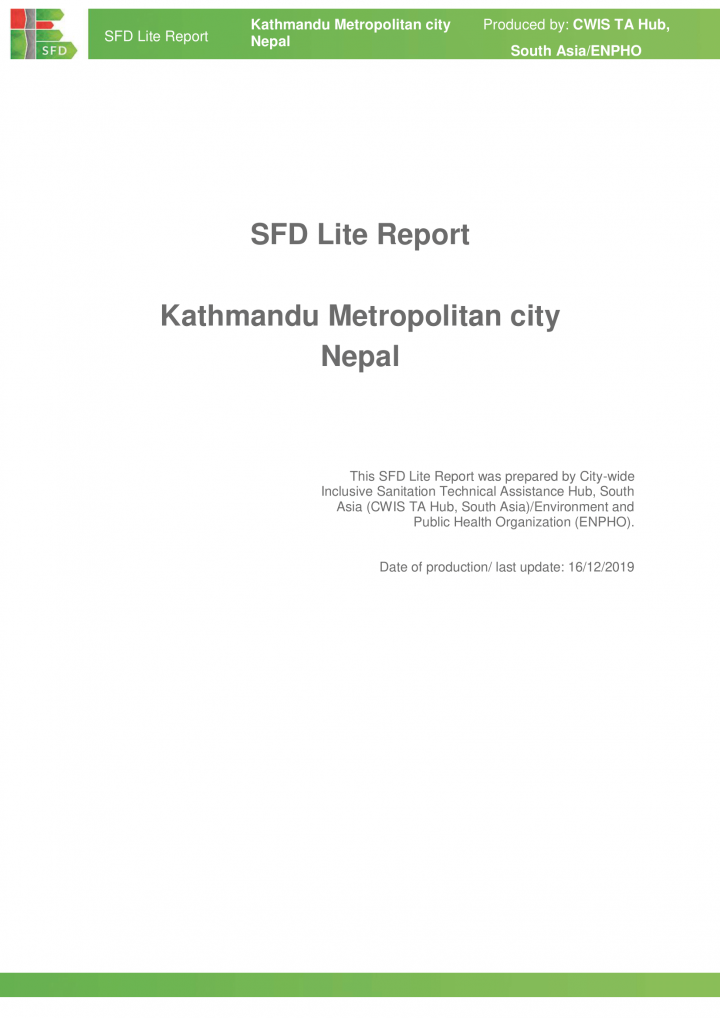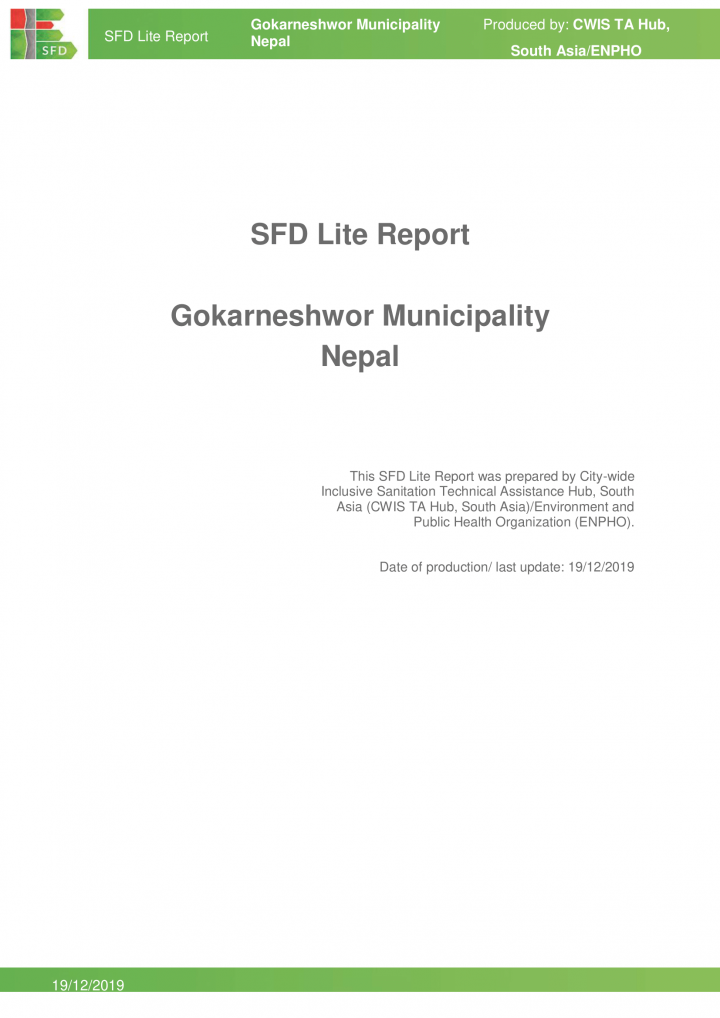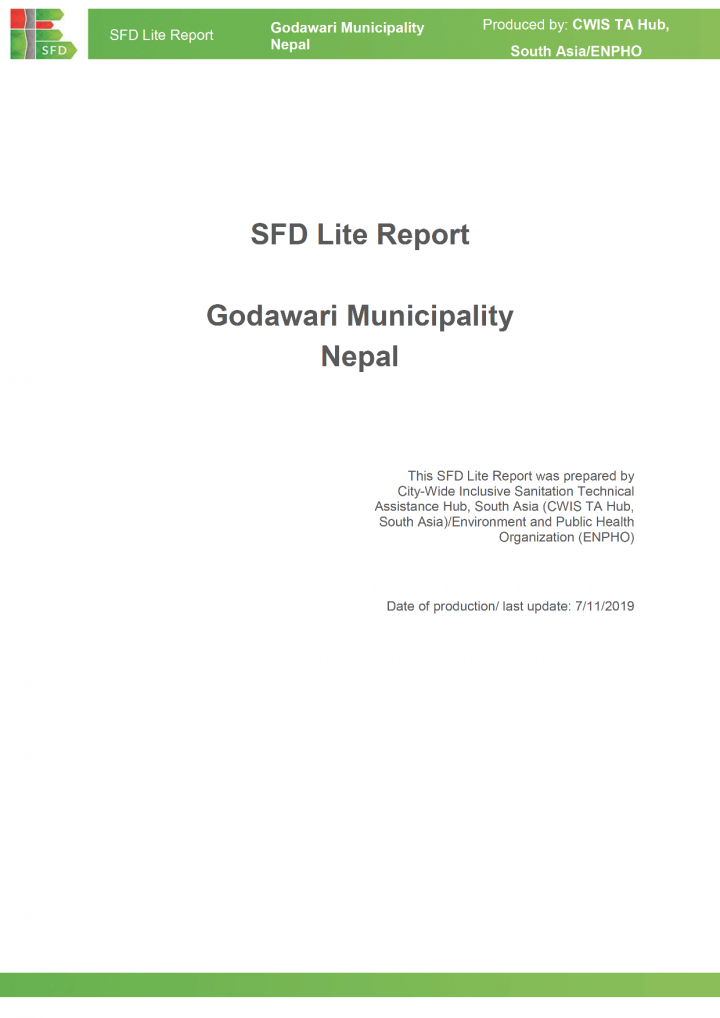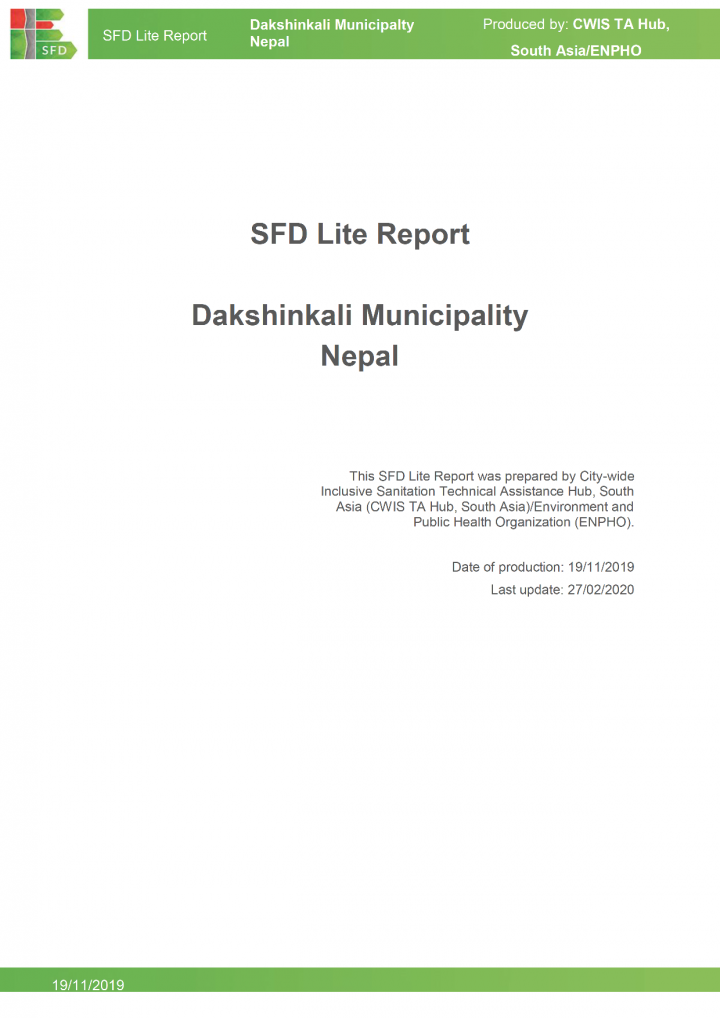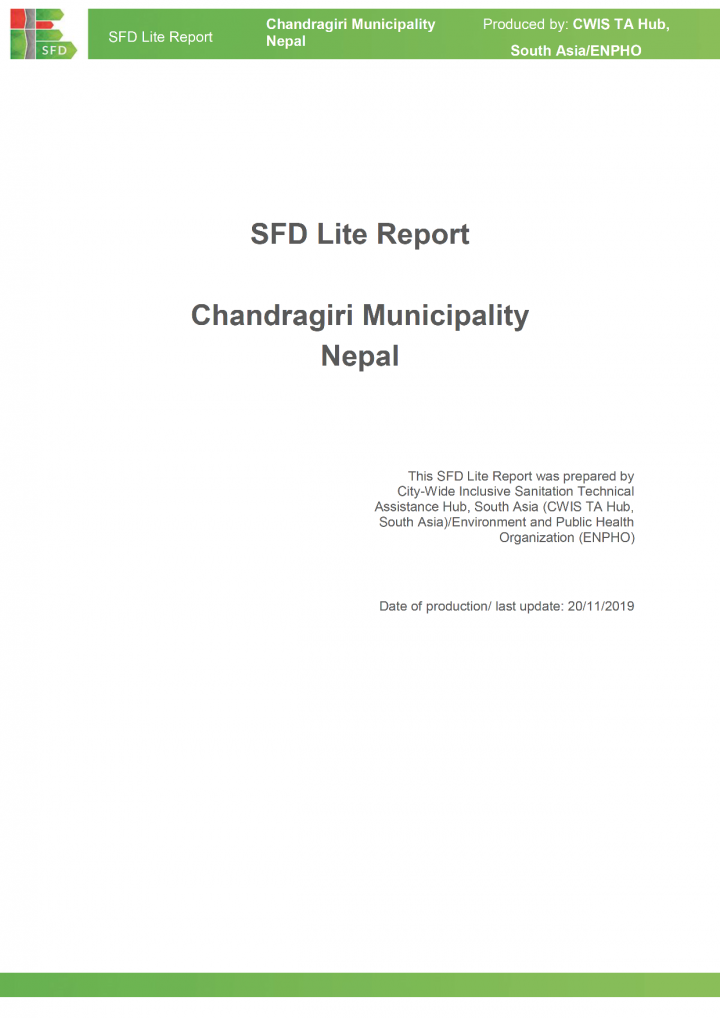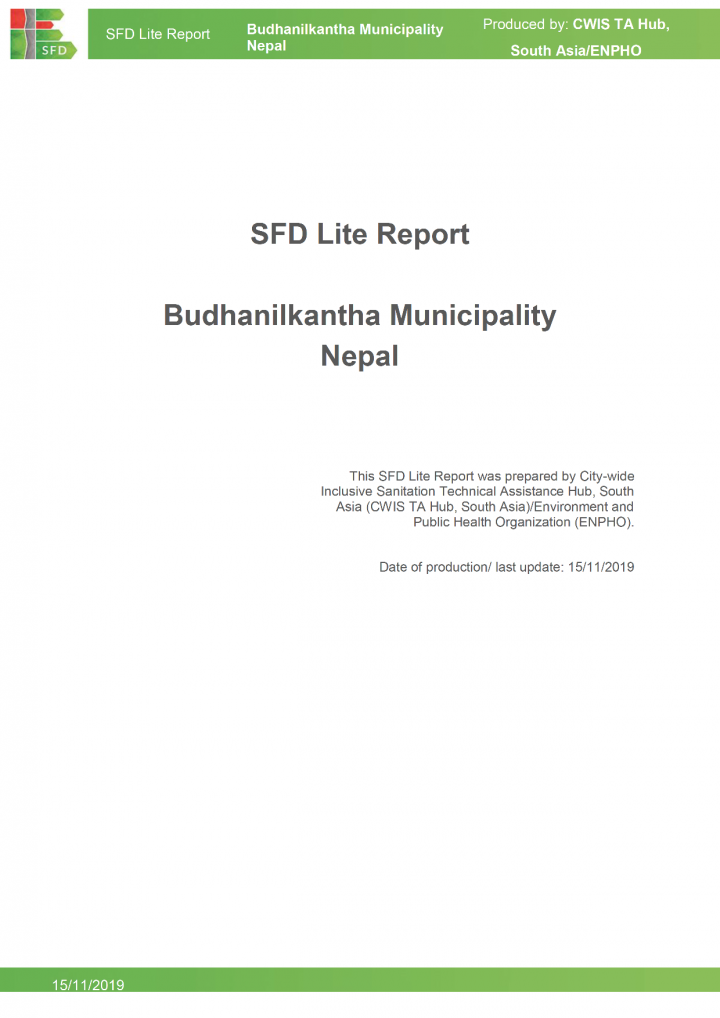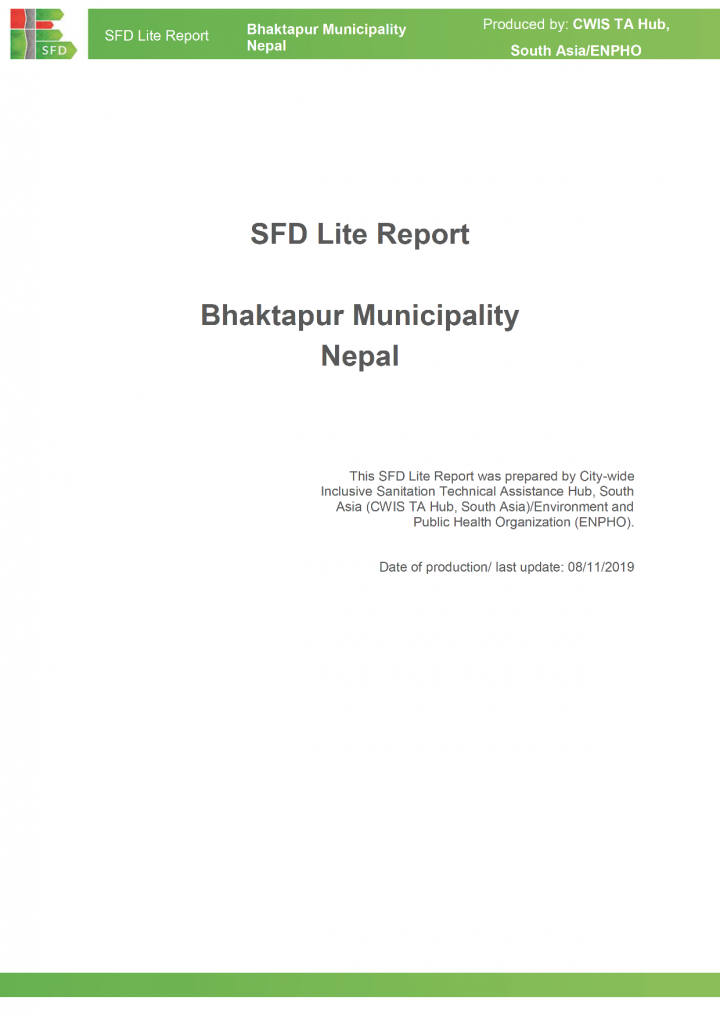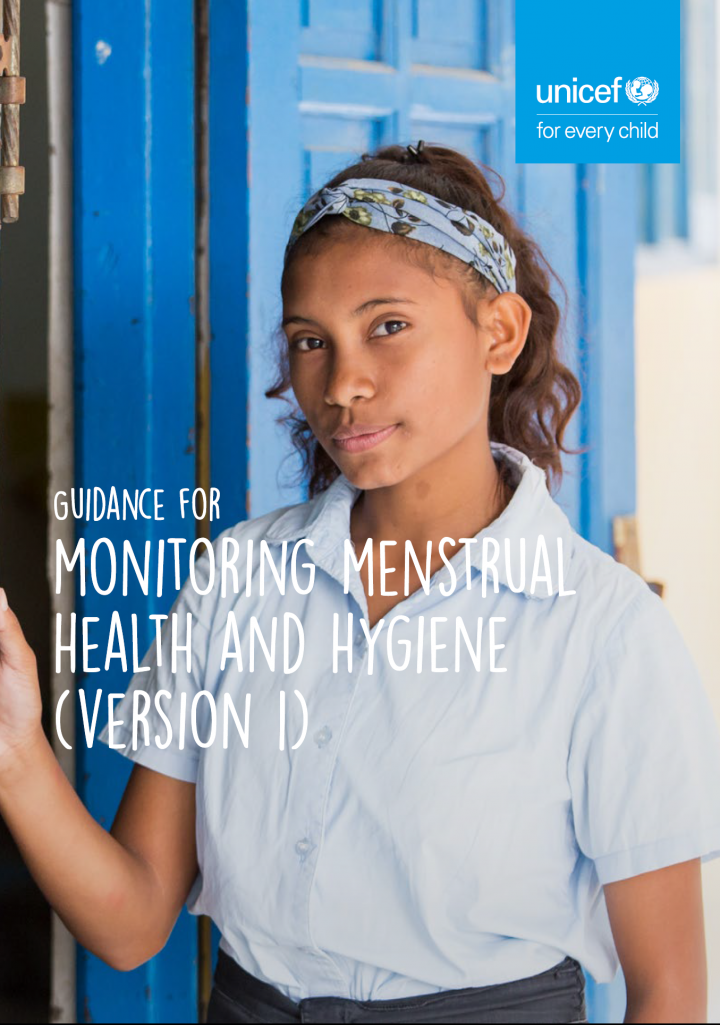Searching for information on Sanitation Workers?
The Sanitation Workers Knowledge + Learning Hub is the best source for all current news, trends, articles and updates on sanitation workers rights around the world.
Tarakeshwor Municipality is located in Kathmandu district in Province no. 3 of Nepal. The total population of the municipality is 81,443 people residing on 20,133 households. Most people are dependent on public water supply. Households without access to public water supply rely on well and tap water. 38% of population are dependent on sewer system, followed by user interface directly connected to …
Suryabinayak Municipality is located in Bhaktapur District in Province No. 3 of Nepal. It consists of 10 wards with the total population of 113,471 people residing in 19,179 households. The majority (74%) of the households are dependent on piped water facility, 8% of the households rely on spring water and the remaining 18% are dependent on their own sources such as tap water (bore water) and …
Shankharapur Municipality is located in Kathmandu District in Province No. 3 of Nepal. It consists of 13 wards with the total population of 27,202 people residing in 5,607 households. The main sources of drinking water in Shankharapur Municipality are public taps, household bores and wells. Majority of the population are dependent on the public water supply (75%) and remaining 25% of the …
Nagarjun Municipality is located in Kathmandu district in Province no. 3 of Nepal. The total population of the municipality is 67,420 people residing in 16,746 households. The major sources of drinking water in Nagarjun Municipality are public water supply, well, springs and stream water. More than half of the population of Nagarjun Municipality is dependent on the sewer system followed by lined …
Mahalaxmi Municipality is one of the historic municipalities of Lalitpur district located in province no.3 of Nepal. The municipality consists of 10 wards with the total population of 112,157 people residing in 70,256 households. The main sources of drinking water in Mahalaxmi Municipality are public taps, household bores and wells. 23% of the population are dependent on sewer system. The most …
Madhyapur Thimi Municipality is located in Bhaktapur district in Province no.3 of Nepal, consisting of 9 wards. The total population of the municipality is 83,036 residing in 20,302 households. Combined sewers are predominantly found in Madhyapur Thimi Municipality, followed by lined tanks with impermeable walls and open bottom, lined pits with semi-permeable walls and open bottom with no outlet …
Lalitpur Metropolitan city which literary means ‘the city of fine arts’ is located in Lalitpur district of Province no.3 of Nepal. The city consist of 29 wards with the total population of 284,922 people residing in 70,256 households. The main sources of drinking water in the city are taps (municipal water supply), tap water (bore water) and wells. Majority of the population of Lalitpur …
Kirtipur is one of the historical cities, which was declared as municipality among 58 municipalities under the Municipal Act in 1996 (2053 B. S., in Nepali calendar) within the Kathmandu valley. The total population of Kirtipur Municipality is 65,602 residing in 19,941 households. People of Kirtipur Municipality rely on either municipal water supply or from other sources. The main sources of …
Kathmandu valley lies between the latitudes 27˚32’13’’ and 27˚49’10’’ north and longitudes 85˚11’31’’ and 85˚31’38’’ east at a mean elevation about 1,300 metres above sea level. Kathmandu Valley is the most developed and populated place in Nepal. The majority of offices and headquarters are located in the valley, making it the economic hub of Nepal. The SFD was …
Kathmandu Metropolitan city is the eldest metropolitan city and capital of the Federal Democratic Republic of Nepal, located in Kathmandu district of Province no.3 of Nepal. The city consists of 32 wards with the total population of 1,347,011 people residing in 298,752 households. Majority of the population of Kathmandu Metropolitan city are dependent on sewer system, followed by lined tanks with …
Kageshwori Manohara Municipality is located in Kathmandu district in Province No.3 of Nepal. The total population of the municipality is 102,235 residing in 26,166 households. People rely on either municipal water supply or from other sources. The main sources of drinking water are public tap, well and household bore water.
27% of the population are dependent on centralized combined sewer, 33% …
Gokarneshwor Municipality is located in Kathmandu District in Province No. 3 of Nepal. The municipality consists of 9 wards with the total population of 107,351 people residing in 27,106 households. Majority of the population are dependent on public taps as the main source of drinking water. The remaining population are dependent on spring water, tap water (bore water) and wells. Most of the …
Godawari Municipality is located in Lalitpur District in Province No. 3 of Nepal. The municipality consist of 14 wards with the total population of 116,045 residing in 18,232 households. The majority of the population use lined tanks with impermeable walls and open bottom followed by fully lined tanks, lined pits with semi-permeable walls and open bottom, pits (all types) never emptied but …
Dakshinkali Municipality is located in Kathmandu District in Province No. 3 of Nepal. The total population is 24,297 people residing in 6,925 households. Majority of the population (80%) are dependent on public taps and the remaining 20% of population are dependent on spring water. 14% of the population depend on an offsite sanitation system but most of the population in Dakshinkali Municipality …
Chandragiri Municipality is located in Kathmandu District in Province No. 3 of Nepal with a total population of 85,198 residing in 20,532 households. The main sources of drinking water in Chandragiri Municipality are public taps, household bores and wells. Majority of the households are dependent on public water supply. The majority of the population use lined tanks with impermeable walls and …
Budhanilkantha Municipality is located in Kathmandu District in Province No. 3 of Nepal with a total population of 153,303 people residing in 32,039 households. Most of the population are dependent on the sewer system followed by fully lined tanks, lined tanks with impermeable walls and open bottom, septic tanks, user interface directly connected to open drain and lined pits with semi-permeable …
Bhaktapur Municipality is located in Bhaktapur district of Province no.3 of Nepal. The total number of people is 81,748, living in 17,639 households. Majority of the population of Bhaktapur Municipality are dependent on public water supply and their own source such as well and tap water. Mostly, the population of Bhaktapur Municipality
are dependent on sewer system followed by fully lined tanks, …
Kabul is the capital and largest city of Afghanistan, located in the eastern section of the country. According to a 2012 estimate, the population of the city was around 3,289,000. It was selected for the SFD program because it is a mega city with only 20% supplied with piped water and 60% informal dwellings. In Kabul it was estimated that 25% of excreta is managed safely while 75% of the excreta …
The overall goal of the SuSanA is to contribute to the achievement of the MDGs by promoting sanitation systems which are taking into consideration all aspects of sustainability. The MDGs and the UN’s “International Year of Sanitation 2008” are highly appreciated by the “Sustainable Sanitation Alliance” as they help push sanitation high up in the political agenda. The main focus of the …
After achieving the target of universal coverage of individual household toilet, Swachh Bharat Mission Gramin is working towards addressing the menace of solid and liquid waste management (SLWM) to ensure clean and healthy villages.
Government of Chhattisgarh has taken a sustainable approach to address solid and liquid waste in the state. SBM-G has adopted decentralized processes for waste …
Current solid and liquid waste disposal practices is far from desirable and needs a rethink and an innovative approach with emphasis on conservation and reuse to meet the goals of clean, healthy and liveable villages. Indiscriminate and uncontrolled abstraction has resulted in significant fall of ground water. Compounding the falling ground water table is the contamination of groundwater from …
This strategy for ODF sustainability is guided by the vision of the state government and the requirement of the second phase of the sanitation movement. Further, meeting the said objectives will require progress in several dimensions of sanitation and involvement of different departments of the state government dealing with the particular matter as well as all other stakeholders working in the …
Sustaining the ODF status in all districts of West Bengal is the need of the hour. Starting with the first ODF district- Nadia, which has already gathered considerable experience in ODF Sustainability, the entire State is now progressing from ODF stage to ODF Sustainability stage. The impact of ODF S including sanitation, safe drinking water and improved hygiene practices goes way beyond just …
There has been significant increased attention to menstrual health and hygiene (MHH) in the WASH sector over the past decade, but it has not been accompanied by robust or consistent monitoring. While there is not yet sufficient evidence to recommend a comprehensive set of validated indicators and questions to support MHH monitoring, there are simple steps that can be taken now by governments and …

